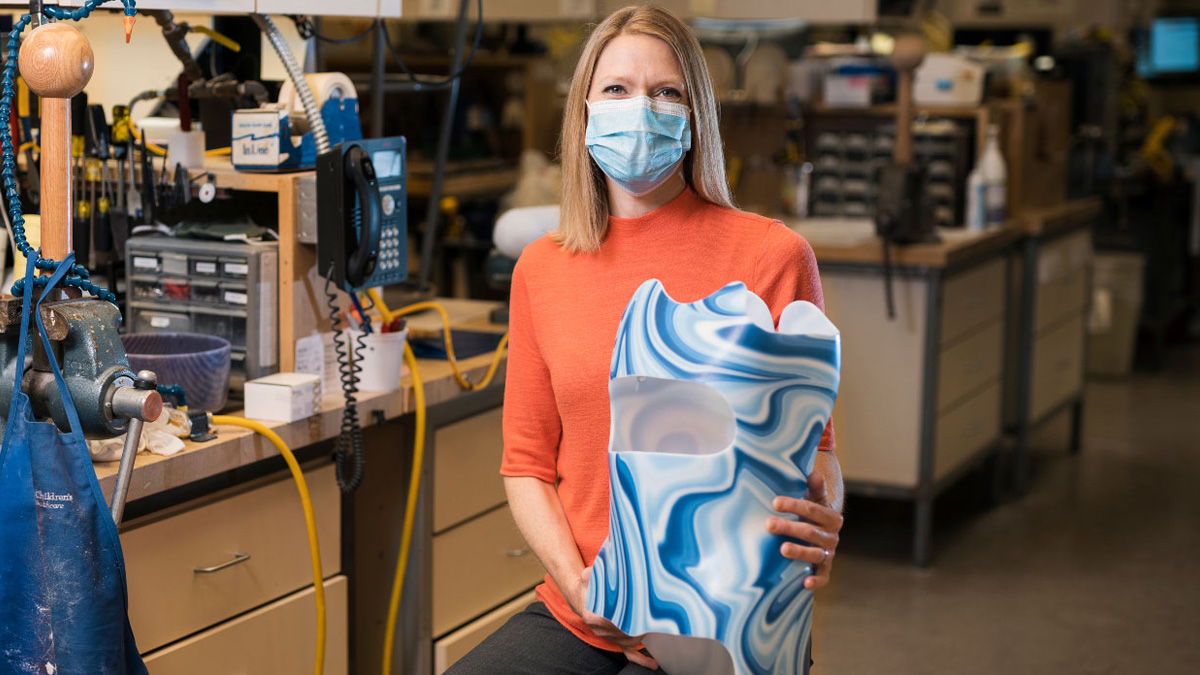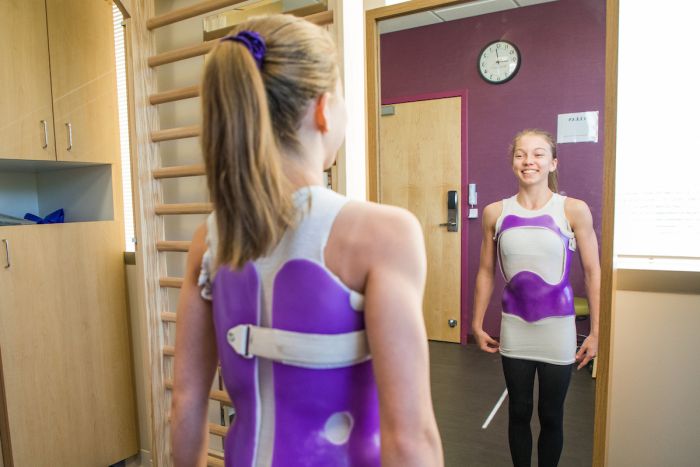Scoliosis is an abnormal sideways curvature of the spine that is typically noticed during the growth spurt of puberty. Treatment can require wearing a brace or even surgery. Because it can happen right when most teens are worried about their appearance, the thought of wearing a brace every day can create a lot of stress and questions. This blog post will answer some of the most common questions about scoliosis bracing to help reassure your child.
How does scoliosis bracing work?
The primary purpose of wearing a scoliosis brace is to prevent your spine from becoming more curved as you grow. As the spine curves, the vertebrae sometimes also twist toward one side of the body. Your brace will be molded to hold your spine in a straighter, unrotated position. It does this by putting pressure on the outer edge of your curve. This will cause you to stand up straighter as you pull away from this pressure.
What degree of scoliosis requires a brace?
Bracing is generally used to prevent your scoliosis from getting worse when you have:
- A curve that is moderate in size (20 to 40 degrees) AND
- A small curve that is progressive (has increased by more than 5 degrees) OR
- A curve that is over 30 degrees when first diagnosed AND
A lot of growing has yet to happen Your doctor may consider other factors in recommending a brace, such as if you have additional medical conditions or have family members with scoliosis.
What kind of brace will I need and why?
Your doctor will work with an orthotist, a professional who specializes in fitting and making braces, to recommend the best type of brace for you. The kind of brace you need depends on several factors like:
- Where the curve is located on your spine
- How flexible your curve is
- The number of curves you have
- The position and rotation of some of the vertebrae in your spine
- Any other medical conditions you may have
Your doctor and orthotist will also take into account your activities and lifestyle when suggesting braces. You and your parents can then decide which brace you prefer among the choices given. The brace only works if you wear it as directed, so it’s important you’re a part of the decision-making process.

How long will I have to wear my brace?
The most important time for scoliosis bracing is during periods of rapid growth. This is when you have an opportunity to have a positive effect on your scoliosis. After taking your growth pattern into account, your doctor will create a personalized schedule of how many hours you need to wear your brace each day. It will be based on the degree of your curve and your stage of growth. Generally, people with moderate scoliosis wear their brace between 12 and 20 hours a day. Those who wear their brace for the recommended number of hours a day are less likely to need surgery. Nighttime bracing is used in some patients for mild curves or when full-time bracing is not possible.
What’s the difference between nighttime and full-time scoliosis braces?
Nighttime bracing systems are meant to only be worn just before bed and while sleeping. Full-time braces are typically worn more hours during the day than at night, and are designed to be worn in an upright position.
How will scoliosis bracing affect my daily life?
It will probably take time to get used to wearing your brace, but it should become more comfortable after you’ve worn it for a couple of weeks. Most braces can be worn under normal clothing. It will be up to you to decide if you want to tell other people you are wearing it. However, many people find their brace easier to deal with when they can talk with their friends about what it’s like to wear a scoliosis brace.
Get Gillette Stories in your inbox!
Stay “in the know” with our Gillette Stories! Receive the latest stories and news from Gillette delivered straight to your inbox..
 Home Page
Home Page



